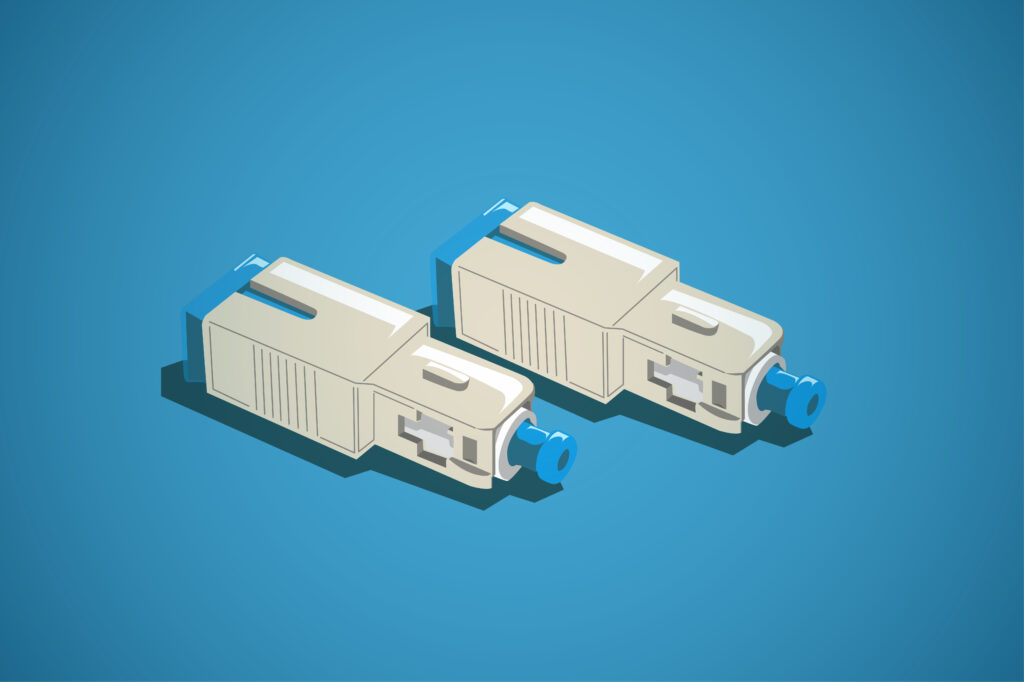Business organizations that eye for long-haul data transmission usually get wrapped up in strengthening their network’s power signal. Many accredited fiber optic technicians have been hired by business owners to install optical fiber in business sites for this exact reason.
But even though acquiring a strong network signal has its own benefits, too much of it can produce an excessive amount of light that the fiber optic receiver can no longer handle. Therefore, it’s only reasonable for organizations to acquire fiber optic attenuators to control the power in fiber links.
How Does an Optical Attenuator Work?
If you take a look at the businesses that make use of fiber optic attenuators, you will see that the device is commonly used for two reasons—transmitter and receiver signal level matching or fiber optic power testing. Regardless of its purpose, fiber optic attenuators are a great help to organizations that rely heavily on the power of fiber optics.
According to certified fiber optic technicians, the fiber optic attenuator is a passive device that’s used to reduce the power level of an optical signal. With this device, technicians can finally extract the excess light that it produces and scatter it like an air gap. A fiber optic attenuator in hand can certainly help you reduce the optical signal that reaches the fiber optic receiver.
As mentioned earlier, excessive optical signal power can do more harm than good to a fiber optic network. The light it produces won’t just have the capacity to overload the fiber optic receiver, it will also have the ability to degrade your network’s bit error ratio (BER). And so acquiring fiber optic attenuators for organizations is no longer discretionary but now a necessity.
Different Types of Fiber Optic Attenuators
As of date, there are different types of optical attenuators available in the market. Typically, they are grouped as fixed optical attenuators and optical variable attenuators. To discuss further this matter, here are the things you ought to know about these fiber optic attenuators:
Fixed Optical Attenuator
As indicated in its name, fixed optical attenuators are designed to produce an unchanging level of attenuation. This type of attenuator consists of an in-line type and a connector-type. While in-line type attenuators look like any ordinary fiber patch cable, the connector type looks like a bulkhead fiber optic connector. Apart from that, the connector type attenuator has a male and female connector interface situated on opposite ends. These attenuators are usually mated to regular connectors of the same type. Furthermore, the fixed optical attenuator is often used to be in the service of telecommunication networks, Local Area Networks (LAN), and optical fiber test facilities.

Optical Variable Attenuator
The optical variable attenuator is renowned for its stability, wavelength insensitivity, mode insensitivity, and its ability to offer a large dynamic range. Aside from that, this attenuator is also known by technicians for making use of a variable neutral density filter. Most often than not, the variable optical attenuator is used for the purpose of testing and measurement. But that’s not all it can do—it can also equalize the light power among different channels.
There are two types of optical variable attenuators—these are known as the stepwise variable attenuator and the continuously variable attenuator. The stepwise attenuator can change signal attenuation in known steps like 0.1dB, 0.5 dB, or 1dB. Meanwhile, the continuously variable optical fiber has the capacity to produce a precise level of attenuation that can be adjusted easily.

adjustment device. Furthermore, the card design also enables businesses to install and remove their optical variable attenuator without the need for any tools.

Optical Attenuator Working Principles That You Need to Know
Now that you’re aware of how fiber optic attenuators work and the different types of optical attenuators, it’s time for you to learn about its working principles. Through these principles, you’ll be able to know how your fiber optic attenuators achieve the optical power reduction necessary.
Gap-Loss Principle
In this principle, the fiber optic attenuator is inserted in the fiber path together with an in-line configuration in order to reduce the optical power signal that is being produced. By placing these gap-loss attenuators close to the transmitter, operators gain the ability to prevent the saturation of the receiver. In addition, the attenuator also uses a longitudinal gap between optical fibers in order to reduce the optical signal that passes through one optical fiber to another. That said, the gap-loss principle refers to how some of the optical signals get lost in the cladding as it moves toward the receiving optical fiber.
Absorptive Principle
Because of the imperfections found in fiber optics, cables are redesigned to absorb optical energy and convert it to heat. According to fiber optic experts, the absorptive principle accounts for a fraction of the optical power reduction in fiber optics. Through that, it became one of the most well-known principles that have effectively reduced the power that’s being transmitted and received by fiber optics.
Reflective Principle
In this working principle, it is explained that the material used in attenuators are designed to reflect a known quantity of signal. That said, attenuators gain the ability to reduce the amount of light that the optical fiber transmits and receives by allowing the light that passes through to scatter and insert an interference.
This principle is accounted to have caused most of the signal power loss that fiber optic users experience in their network. Hence, it is perfect for planned signal attenuations.



